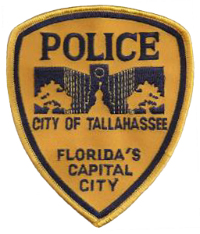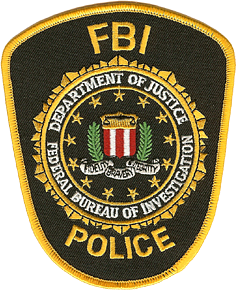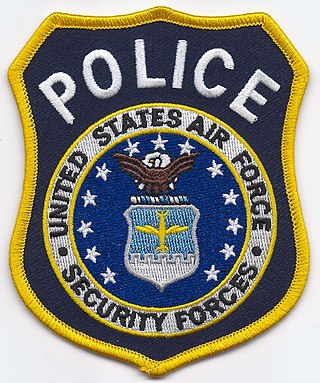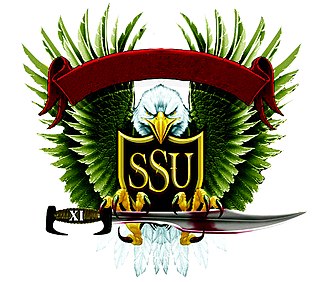
The Federal Bureau of Investigation (FBI) is the domestic intelligence and security service of the United States and its principal federal law enforcement agency. Operating under the jurisdiction of the United States Department of Justice, the FBI is also a member of the U.S. Intelligence Community and reports to both the Attorney General and the Director of National Intelligence. A leading U.S. counterterrorism, counterintelligence, and criminal investigative organization, the FBI has jurisdiction over violations of more than 200 categories of federal crimes.

The United States Secret Service is a federal law enforcement agency under the Department of Homeland Security charged with conducting criminal investigations and protecting U.S. political leaders, their families, and visiting heads of state or government. Until 2003, the Secret Service was part of the Department of the Treasury, as the agency was founded in 1865 to combat the then-widespread counterfeiting of U.S. currency.

A detective is an investigator, usually a member of a law enforcement agency. They often collect information to solve crimes by talking to witnesses and informants, collecting physical evidence, or searching records in databases. This leads them to arrest criminals and enable them to be convicted in court. A detective may work for the police or privately.

The FBI Academy is the Federal Bureau of Investigation's law enforcement training and research center near the town of Quantico in Stafford County, Virginia. Operated by the bureau's Training Division, it was first opened for use on May 7, 1972 on 385 acres (156 ha) of woodland, which is not available for public tours. The academy was opened for the purpose of training the new agents after FBI Agents were granted the power to arrest, and to possess a firearm, in 1933. As the newly armed agents needed somewhere to train, the Marine Corps granted them access to their firing ranges in Quantico, Virginia. After outgrowing the Marine Corps firing ranges the FBI was granted permission to build their own firing range and classroom on the base. Over time they added new sections such as a whole new wing, kitchen, and basement. But with the rapid growth it still wasn't enough for their needs.
U.S. Immigration and Customs Enforcement (ICE) is a federal law enforcement agency under the U.S. Department of Homeland Security. ICE's stated mission is to protect the United States from the cross-border crime and illegal immigration that threaten national security and public safety.
The Bureau of Alcohol, Tobacco, Firearms and Explosives (BATFE), commonly referred to as the ATF, is a domestic law enforcement agency within the United States Department of Justice. Its responsibilities include the investigation and prevention of federal offenses involving the unlawful use, manufacture, and possession of firearms and explosives; acts of arson and bombings; and illegal trafficking and tax evasion of alcohol and tobacco products. The ATF also regulates via licensing the sale, possession, and transportation of firearms, ammunition, and explosives in interstate commerce. Many of the ATF's activities are carried out in conjunction with task forces made up of state and local law enforcement officers, such as Project Safe Neighborhoods. The ATF operates a unique fire research laboratory in Beltsville, Maryland, where full-scale mock-ups of criminal arson can be reconstructed. The ATF had 5,285 employees and an annual budget of almost $1.5 billion in 2021. The ATF has received criticism over the Ruby Ridge controversy, the Waco siege controversy and others.

The Bureau of Indian Affairs (BIA), also known as Indian Affairs (IA), is a United States federal agency within the Department of the Interior. It is responsible for implementing federal laws and policies related to Native Americans and Alaska Natives, and administering and managing over 55,700,000 acres (225,000 km2) of reservations held in trust by the U.S. federal government for indigenous tribes. It renders services to roughly 2 million indigenous Americans across 574 federally recognized tribes. The BIA is governed by a director and overseen by the Assistant Secretary for Indian Affairs, who answers to the Secretary of the Interior.
A special agent or federal agent is an investigator or detective for a governmental or independent agency, who primarily serves in criminal investigatory positions. Additionally, many federal and state special agents operate in "criminal intelligence" based roles as well. Within the U.S. federal law enforcement system, dozens of federal agencies employ federal law enforcement officers, each with different criteria pertaining to the use of the titles Special Agent and Agent.
A law enforcement officer (LEO), or peace officer in North American English, is a public-sector employee whose duties primarily involve the enforcement of laws. The phrase can include campaign disclosure specialists, local police officers, prosecutors, municipal law enforcement officers, health inspectors, SWAT officers, customs officers, lawyers, state troopers, federal agents, secret agents, special investigators, coast guards, border patrol officers, judges, district attorney, bounty hunters, gendarmerie officers, immigration officers, private investigators, court officers, probation officers, parole officers, arson investigators, auxiliary officers, animal control officers, game wardens, park rangers, county sheriff's deputies, constables, marshals, detention officers, correction officers, sworn campus police officers and public safety officers. Security guards are not law enforcement officers, unless they have been granted powers to enforce particular laws, such as those accredited under a community safety accreditation scheme such as a security police officer.

The United States Indian Police (USIP) was organized in 1880 by John Q. Tufts the Indian Commissioner in Muskogee, Indian Territory, to police the Five Civilized Tribes. Their mission is to "provide justice services and technical assistance to federally recognized Indian tribes." The USIP, after its founding in 1880, recruited many of their police officers from the ranks of the existing Indian Lighthorsemen. Unlike the Lighthorse who were under the direction of the individual tribes, the USIP was under the direction of the Indian agent assigned to the Union Agency. Many of the US Indian police officers were given Deputy U.S. Marshal commissions that allowed them to cross jurisdictional boundaries and also to arrest non-Indians.

The Tallahassee Police Department (TPD), provides public safety services for the city of Tallahassee, Florida, United States. Within the department, there are twelve primary divisions: The Chief of Police, Internal Affairs, Development Bureau, Investigations, Traffic Enforcement, Crime Analysis Unit, Public Information Office, Towing Administration, Property & Evidence, Operations Bureau, Technology, Records, and Special Operations.

The Oklahoma State Bureau of Investigation (OSBI) is an independent state law enforcement agency of the government of Oklahoma. The OSBI assists the county sheriff offices and city police departments of the state, and is the primary investigative agency of the state government. OSBI works independent of the Oklahoma Department of Public Safety to investigate criminal law violations within the state at the request of statutory authorized requesters. The OSBI was created in 1925 during the term of Governor Martin E. Trapp.

The FBI Police is the uniformed security police of the Federal Bureau of Investigation (FBI) and is part of the Bureau's Security Division. The FBI Police is tasked with protecting key FBI facilities, properties, personnel, users, visitors, information and operations from harm and may enforce certain laws and administrative regulations.
The federal government of the United States empowers a wide range of federal law enforcement agencies to maintain law and public order related to matters affecting the country as a whole.

The Florida Department of Law Enforcement (FDLE) is a state-wide investigative law enforcement agency within the state of Florida. The department formally coordinates eight boards, councils, and commissions. FDLE's duties, responsibilities, and procedures are mandated through Chapter 943, Florida Statutes, and Chapter 11, Florida Administrative Code. FDLE is headed by a commissioner who reports to the Florida Cabinet, which is composed of the governor, the attorney general, the chief financial officer, and the commissioner of agriculture. The commissioner is appointed to his position by the governor and cabinet and confirmed by the Florida Senate.

The California Department of Justice is a statewide investigative law enforcement agency and legal department of the California executive branch under the elected leadership of the California Attorney General (AG) which carries out complex criminal and civil investigations, prosecutions, and other legal services throughout the US state of California. The department is equivalent to the State Bureau of Investigation in other states.
Law enforcement in New York City is carried out by numerous Federal, State, City and Private agencies. New York City has the highest concentration of Law Enforcement in the United States.

The United States Department of the Air Force Police are the civilian uniformed police service of the United States Department of the Air Force, responsible for the force protection of assets and all aspects of law enforcement on U.S. Air Force and U.S. Space Force installations, and other facilities operated by Air Force and Space Force.

The Special Service Unit (SSU) is a component of the California Department of Corrections and Rehabilitation (CDCR). The unit is staffed by special agents[1] assigned to field offices throughout the state. Although the special agents work for CDCR, they are neither correctional officers nor parole agents. SSU special agents are full-time peace officers per California Penal Code Section 830.2. This makes agents more akin to state police officers than to correctional officers.[2]


















